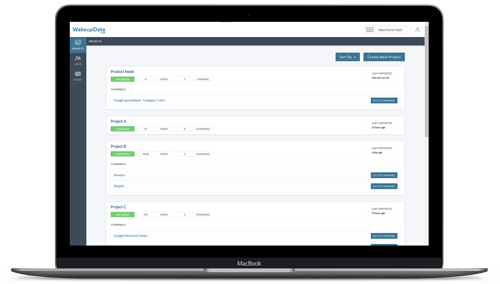The 10 Most Important Ecommerce KPIs to Grow Sales
Posted on January 15, 2020 (Last Updated: August 06, 2021)
KPIs are performance measures used to track the growth process, general performance and effectiveness of your site. It lets you know how well the personnel that make up the organisation are doing individually and collectively to achieve set business goals.
They help you know your current standing and the strategy to take in order to achieve your targets. It can be used to analyse and strategise. Key performance indicators are the road map to a successful business and should be taken seriously. It is, therefore, a data point used to scale performance in relation to a goal.
They give you more information about your business and your customers, so you can make informed and strategic decisions, track your sales, know what is working and what is not and ultimately improve on it. There are a lot of performance indicators, but they narrow down to your service and helps provide the data that will ultimately increase your business sales and discover strategies to improve on faulty areas.
KPIs also help to access the most important metrics on your e-commerce site which are traffic, sales, and profit. They can also be used to keep track of customer loyalty and therefore must be regularly studied.
The most successful e-commerce sites are those that invest in key performance indicators, discover insights, make the essential changes from the data collated and increase sales, profit, and traffic in the long run. The following are the most important to take note of;
1. Conversion Rates
This registers the difference between an attracted visitor and a lead, whilst visitors mostly scan through, probable leads end up interested in what they see and take necessary action in that path. While visitors are important for traffic, leads are the ones that guarantee sales and profit which is the end goal of every e-commerce site. They, therefore, indicate the number of leads (visitors who take necessary action on visiting your site).

These actions could range from inquiries and creating accounts to purchase your product and in the end, give positive product reviews. It is the backbone of the success of any e-commerce site. If you have recently taken on a paid ad or new marketing and advertising strategy, it will help you know if it is beneficial to you.
An increase is a positive sign that indicates a working strategy. Study and comparison on a monthly and yearly basis will help you know what you can improve on and what to stop doing.
2. Customer Lifetime And Relationship Value
This entails the relationship between your site and your customers on a direct and less formal level. It is very important to maintain a cordial relationship with your customers/clients and having a personal relationship with your customers and clients has a way of retaining customers and building a cordial and loyal relationship.

This is therefore also important to take note of and is highly essential to the growth of your brand. Building a long term relationship and keeping a track of such a relationship will benefit your brand massively as loyal customers publicly advertise your brand without even realizing it which means more customers, more sales and more profit.
3. Bounce Rate
Have you ever visited a site and not spent up to 5 minutes on it? This might be because you did not see what interests you or you cannot acquire what brought you to the page in the first place. If users keep leaving a page quickly then such a page has to be looked into. Is the site not delivering the right product or service? Is the price above standards or quality below standards? What type of reviews does the product or service have?
All these can be tracked and corrected with the bounce rate KPI. This will lead to consumer satisfaction, retention, repurchase, profit and an increase in conversion rates. The more time visitors spend on your page shows that your product or service interests them in a way and increases the possibility of them becoming leads.
4. Customer Loyalty And Retention
A saying goes "Old wine best to drink, old books best to read, old friends best to keep", putting so much attention on aiming new customers and not taking into consideration and view your current ones will eventually affect your brand. Customer retention rate is essential to keep track of how much of your customers you have kept as customers over a given period of time.
If you are having issues with retaining your old customers then there is no guarantee the new ones will stay as customers. This does not exclude the importance of gaining a new and larger base. However, customer loyalty and retention KPI registers the importance of the old ones as equal to the new ones.
It is, therefore, a measure that helps to keep track of your customer retention rate and lets you know if there is a drop in your services, how to improve on it and which strategy keeps them coming back for more.
5. Revisit And Customer Repurchase
What service retains your customers? What product keeps them coming back for more? How frequent are their purchases on this product or service? How can you improve on the product to yield an increase in repurchase and customer loyalty? These are very important questions answered by the repurchase rate.
It is a proven fact that businesses that have loyal customers who keep coming back regularly are doing something right. The annual Repurchase rate helps you track down on loyal customers and their preferred product. This helps you know just how you can improve on them to increase customer satisfaction and ultimately customer retention.
6. Budget Rate And Order Value
This is an averagely measured value that deals with the average amount an average customer spends per purchase. This helps you understand the budget of your customers and how much they spend on each transaction.

It helps you know just when you need to invest your time, money and efforts into acquiring new customers and know which of your products have the highest purchase. You can, therefore, know which product to restock on and increase the revenue for that particular product or service.
7. Traffic Base And Channel With Conversion Rate.
As previously stated, all others are connected to conversion rates directly or indirectly and this is an example of a direct relation. In this case, the conversion rates are recorded based on the traffic channel. This is an in-depth one that gives more information about the area that attracts the highest pull. This lets you know what is working for you in a clean slate as it is more direct and explicit.
Many sites invest a large amount of money into marketing channels that are not working for them and their involvement in various marketing channels prevents them from knowing faulty areas and re-strategizing, when conversion rate per traffic channel is involved, you can know just where to indulge your funds and strengthens your budget and conversion rate.
8. Customer Experience And Satisfaction
This is a measure of how many customers your e-commerce site satisfies. Putting efforts into improving the experience of your customers with your brand will lead to an overall satisfaction on their part. This, in turn, will yield repurchase and ROI.
9. ROI On Marketing
Your marketing investments include ads, tools, labor and every other miscellaneous spending that go into marketing your e-commerce site. If the amount spent on marketing is not equal to the amount that comes in, after removing the profit then there will be a problem in the account.
Keeping a track of your investments in marketing will help to maintain a balance and adjust any losses.
10. Acquired Net Profit
This is not only open to e-commerce sites but also to every commercial setup or organization that deals with demand and supply. The backbone and continuous survival of any business is profit, the end goal is profit, you invest for returns, you advertise for customers to yield sales to get profit, marketing strategies are set in place for-profit purposes.
Net profit is the measure of how much gain you have acquired from a transaction of business over a set period of time. Profits also mean that you can enlarge your business and add a few more setups. When you have a substantial return on profit, you can invest more in marketing and advertising to gain more customers and ultimately earn more profits and such a brand continues to grow. Discounts, giveaways, staff upgrades amongst others are ways to ensure maximum productivity.
Conclusion
An e-commerce site is a very demanding task and understanding the market strategies will do a lot in benefiting your brand. Understanding and utilizing these points is very important to let you know what you are doing right, what you are doing wrong and how you can improve on it.
There are up to a hundred but the above listed are the most important and are intertwined to give the maximum result. Pooling resources and data collated will direct you towards the right decisions that will be beneficial to your brand.
Related: Check out our 9 Tools for E-commerce Managers in 2020 or find out more about our Product feed management tool.
Whatagraph is a solution that offers a comprehensive reporting suite for digital marketing agencies to get clear insights and track client campaigns.



